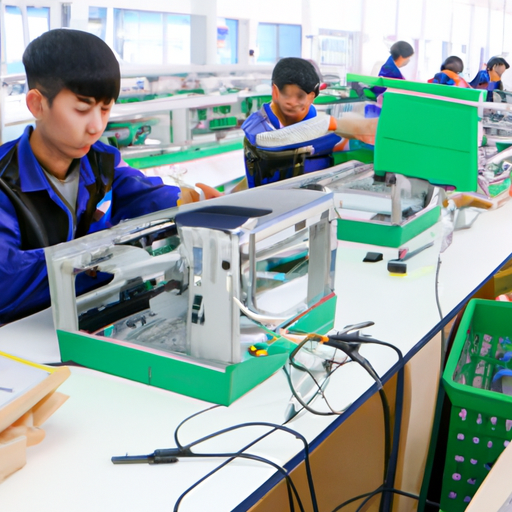With the continuous development and progress of science and technology, the integrated circuit (IC) industry is also constantly ushering in new development trends. In the future development, the IC industry will face a series of challenges and opportunities, and needs to continue to innovate and adapt to market demand. The following are some trends in the future development of the IC industry:

2. Popularization of 5G technology: The commercialization of 5G technology will drive the development of the IC industry. 5G technology requires higher-performance chips to support it, which will prompt the IC industry to increase the research and development and production of high-performance chips. At the same time, the popularization of 5G technology will also drive the demand for smart phones, smart homes and other devices, further promoting the development of the IC industry.
3. Application of artificial intelligence (AI): The rapid development of artificial intelligence technology will have a profound impact on the IC industry. Artificial intelligence requires a large amount of computing resources to support it, which will drive the IC industry to increase the research and development of high-performance, low-power chips. In the future, the IC industry will increase its investment in the field of artificial intelligence and promote the development of artificial intelligence technology.
4. Development of smart cars: The rapid development of smart cars will drive the development of the IC industry. Smart cars require a large number of sensors and chips to achieve functions such as autonomous driving and smart transportation, which will drive the IC industry to increase its R&D investment in the field of smart cars. In the future, the IC industry will increase its investment in the field of smart cars and promote the development of smart car technology.
5. Green environmental protection requirements: With the increase of environmental awareness, the IC industry will face more environmental protection requirements. In the future, the IC industry will increase its investment in the research and development of environmental protection technologies to promote the development of green environmental protection technologies. At the same time, the IC industry will also increase the research and development of energy-saving and low-power technologies to promote the energy conservation and environmental protection of IC products.
In general, the IC industry will face more opportunities and challenges. In the future, the IC industry needs to continue to innovate, adapt to market demand, increase investment in the research and development of new technologies, and promote the development of the IC industry. At the same time, the IC industry also needs to increase investment in the research and development of environmental protection technologies to promote the green and environmental protection of IC products. I believe that in the near future, the IC industry will usher in a brighter development prospect.
With the continuous development and progress of science and technology, the integrated circuit (IC) industry is also constantly ushering in new development trends. In the future development, the IC industry will face a series of challenges and opportunities, and needs to continue to innovate and adapt to market demand. The following are some trends in the future development of the IC industry:

2. Popularization of 5G technology: The commercialization of 5G technology will drive the development of the IC industry. 5G technology requires higher-performance chips to support it, which will prompt the IC industry to increase the research and development and production of high-performance chips. At the same time, the popularization of 5G technology will also drive the demand for smart phones, smart homes and other devices, further promoting the development of the IC industry.
3. Application of artificial intelligence (AI): The rapid development of artificial intelligence technology will have a profound impact on the IC industry. Artificial intelligence requires a large amount of computing resources to support it, which will drive the IC industry to increase the research and development of high-performance, low-power chips. In the future, the IC industry will increase its investment in the field of artificial intelligence and promote the development of artificial intelligence technology.
4. Development of smart cars: The rapid development of smart cars will drive the development of the IC industry. Smart cars require a large number of sensors and chips to achieve functions such as autonomous driving and smart transportation, which will drive the IC industry to increase its R&D investment in the field of smart cars. In the future, the IC industry will increase its investment in the field of smart cars and promote the development of smart car technology.
5. Green environmental protection requirements: With the increase of environmental awareness, the IC industry will face more environmental protection requirements. In the future, the IC industry will increase its investment in the research and development of environmental protection technologies to promote the development of green environmental protection technologies. At the same time, the IC industry will also increase the research and development of energy-saving and low-power technologies to promote the energy conservation and environmental protection of IC products.
In general, the IC industry will face more opportunities and challenges. In the future, the IC industry needs to continue to innovate, adapt to market demand, increase investment in the research and development of new technologies, and promote the development of the IC industry. At the same time, the IC industry also needs to increase investment in the research and development of environmental protection technologies to promote the green and environmental protection of IC products. I believe that in the near future, the IC industry will usher in a brighter development prospect.





